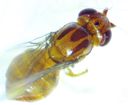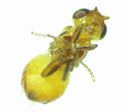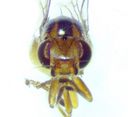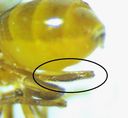Grass Flies
Chloropinae
Classification
- Phylum: Arthropoda
- Subphylum: Hexapoda
- Class: Insecta
- Order: Diptera
- Superfamily: Carnoidea
- Family: Chloropidae
- Subfamily: Chloropinae
Pronunciation
How to pronounce Chloropinae: /ˌklɔːrəˈpaɪniː/
These audio files are automatically generated. While they are not always 100% accurate, they are a good starting point.
Images






Summary
Chloropinae is a subfamily of grass flies in the family Chloropidae, characterized by specific wing vein structures and diverse larval feeding habits.
Physical Characteristics
C ends at or just past R5. In contrast to other subfamilies of Chloropidae where C reaches M.
Identification Tips
Look for the distinct wing vein pattern, specifically where C terminates in relation to R5, which is characteristic of this subfamily.
Habitat
Larvae live in areas where grasses, sedges, and rushes are present, primarily in habitats that support the order Poales.
Diet
Phytophagous species primarily feed on grasses, sedges, and rushes; other species may be saprophagous or predaceous.
Ecosystem Role
Phytophagous species contribute to plant health dynamics, while predaceous species can help control pest populations.
Tags
- Chloropinae
- Grass Flies
- Chloropidae